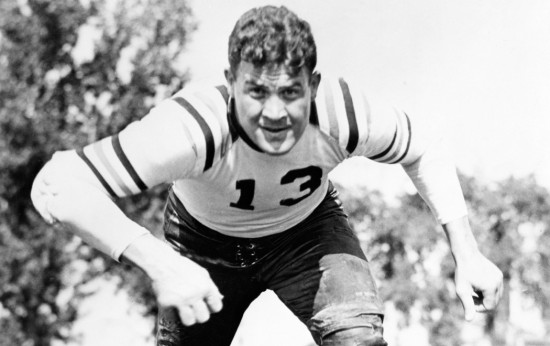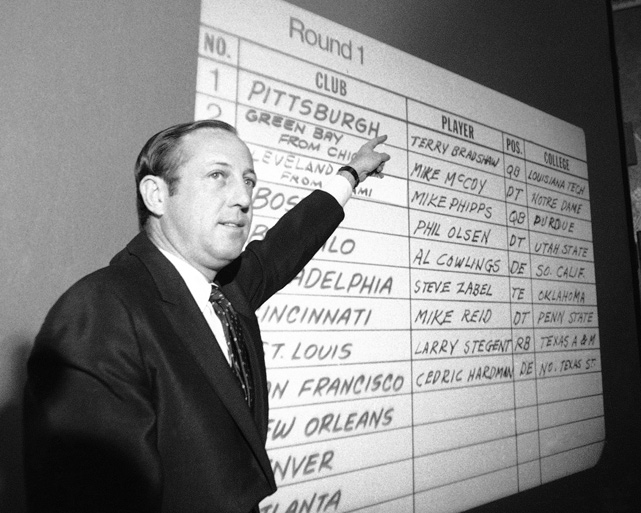How does the National Football League maintain it’s position as the most popular sport in the country? One of the main reasons is the parity developed through the use of the yearly draft of college talent. This NFL 100 feature will explore the evolution of this process over the years. The first draft wasn’t held until 1936, and prior to that it was chaos when it came to player procurement. Players would hold out and sign with the highest bidder, and there was even a case where Steelers’ owner Art Rooney, with his team having no chance to play in the postseason, gave the New York Giants permission to use 2 of his players. The Boston Redskins protested the move and the league commissioner at the time, Joe Carr, disallowed it. After that incident, the waiver claim rule that exists today was put into place. Eventually, Philadelphia Eagles’ owner, and future commissioner Bert Bell proposed the idea of the annual draft to make acquiring talent more fair to each team. His idea was unanimously accepted by the owners and the first draft took place in 1936. The first player ever selected, Jay Berwanger, never played in the NFL. At the time college football was considered a superior game to the pros, and many players saw it as a step down to turn pro. The Eagles had drafted Berwanger and traded his rights to the Chicago Bears when they couldn’t sign him. Bears’ owner George Halas was also unsuccessful in signing him, and Berwanger took a job with a rubber company. Only 24 of the 81 players drafted in that first year of selecting chose to play in the NFL.

Hall of Famer Joe Stydahar, Bears’ first pick in the ’36 draft
Giants’ owner Wellington Mara could be considered the father of modern day scouting, as he subscribed to magazines and out-of-town newspapers to collect information on players across the country. In a sad anecdote to the selecton process, the best player of 1939 was unequivocally Kenny Washington, but when word spread that he was African-American, no team selected him in the 1940 draft. The first actual scout was Eddie Kotal, who was hired in 1946 by the Los Angeles Rams. Coincidentally, the Rams signed Washington, and his UCLA teammate Woody Strode, in ’46. Scouting became the norm for all teams if they wanted to stay competitive, but the draft itself didn’t garner much attention. In 1960, with the inception of the AFL bringing competition, the NFL put a lot more emphasis on the process, since the teams would have to bid against clubs from the new league for players. When the leagues agreed to a merger in 1966 part of the agreement, and a very important part, was the creation of a “common draft” in which the competing leagues would draft as one unit, ending the bidding wars for talent. Commissioner Pete Rozelle would oversee the selections using a blackboard, and in 1970, when the merger was completed and the teams officially merged into one NFL, he graduated to a white board.

Pete Rozelle presides over the 1970 NFL draft
In 1980, the brand new cable network, ESPN, was looking for content to fill their air time, and the network’s president, Chet Simmons, approached Rozelle with the idea of televising the selection process. Although the commissioner thought it would be boring television viewing, he agreed. The draft didn’t do very well on TV until 1988, when it was moved from the middle of the week to the weekend. Suddenly, a new cottage industry of “draftniks” emerged, people like Joel Buchbaum and Mel Kiper, who provided advanced scouting information on the college prospects for the television viewers and through publications. The selection process has grown into a must-see monster of a production today, spread out over three days with the opening round on Thursday night. That opening round is treated as if it were a Hollywood award show, with a red carpet pre-draft show and drama created over every selection. Combined with free agency, the combine and it’s own NFL Network, the draft is just another example of how popular the NFL has become in this modern age, becoming the true national pastime not only during it’s actual season but it’s entire offseason as well.